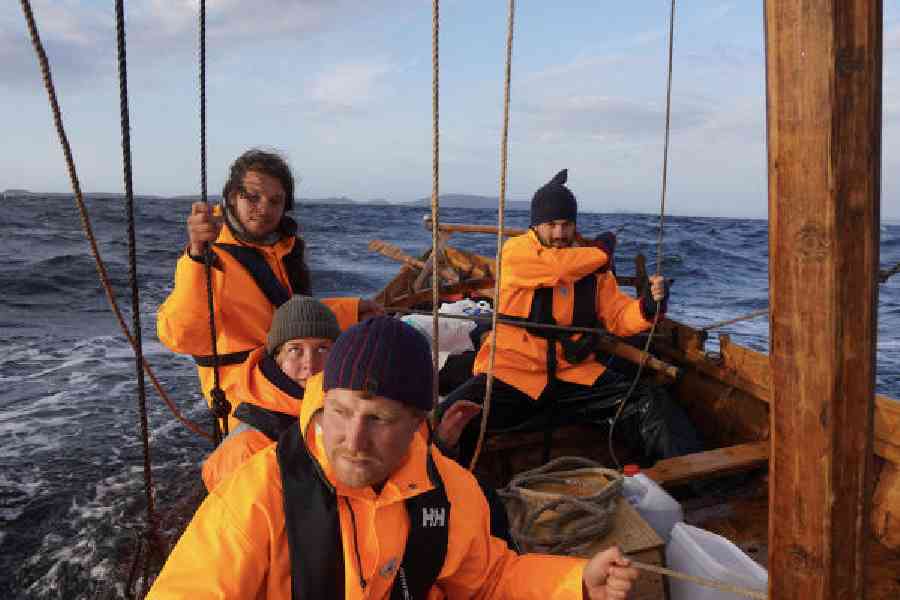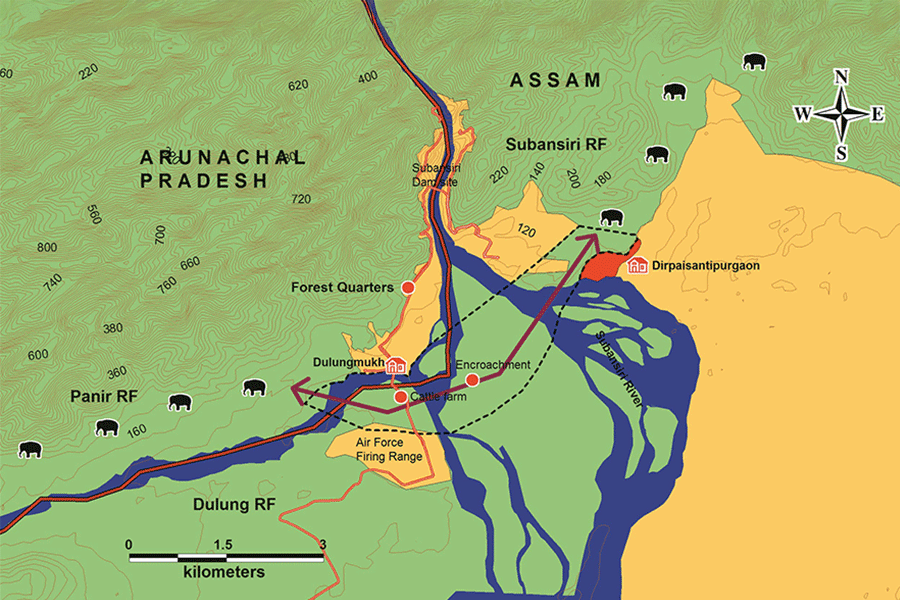Late in the summer of 2021, Greer Jarrett set out on the first of 26 voyages to retrace the maritime paths taken by Norse sailors during the Viking Age, which lasted from 800AD to 1050AD. The Vikings, beyond their reputation as medieval bad boys, were accomplished traders who established commercial routes that stretched all the way to Baghdad. Their primacy relied on mastery of the seas.
Jarrett, a doctoral candidate in archaeology at Lund University in Sweden, was intrigued not only by where these ancient mariners started and wound up, but also the paths they took to get there. So over the next three years, Jarrett piloted nine different modern vessels, built in the styles of those used a millennium ago.
Most of the journeys were undertaken in 30-foot fyringer — square-rigged, open clinker boats, built in the tradition of Afjord, a small Norwegian municipality where Viking-era boat-building techniques endured into the 20th century. Fyringer, the smallest boats in Jarrett’s fleet, were favoured by both fishermen and farmers. “Most scholarship has focussed on the large, impressive longships, which were not designed for long-range sailing and did not represent the realities of everyday life in the period,” Jarrett said.
For much of those three years, Jarrett led student and volunteer crews on sailing expeditions along the west coast of the Scandinavian Peninsula, the historical core of Norse seafaring. Even without traversing oceans, they encountered perils that sometimes rivalled those of Leif Erikson and his father, Erik the Red, who is believed to have been the first European to reach North America.
It was all in the name of science: providing Jarrett with practical insights into Norse navigation. To counter his own academic bias and what he calls “mainland myopia”, Jarrett spends as much time as possible at sea, working as part of a crew onboard a traditional wooden boat, with few modern aids for navigation, comfort and food processing.
He has now published his findings in the Journal of Archaeological Method and Theory. His analysis, spanning the first 17 voyages and 1,494 nautical miles logged during this investigation, weds firsthand observations with digital modelling of the ancient Norwegian shoreline to uncover lost sea routes and hidden harbours once used by Viking seafarers.
Vibeke Bischoff, a ship reconstructor at the Viking Ship Museum in Roskilde, Denmark, said Jarrett’s study, which encompassed several extended sea journeys, upended the notion that Viking traders were confined to coastal travel. Instead, it suggests they were capable of lengthy trips across stretches of open ocean. “Jarrett has demonstrated that the use of experimental archaeological approaches can uncover new subjects for investigation that haven’t been thought of before, quite simply because they haven’t been physically experienced,” he said.
The premise of Jarrett’s new study is that Viking expeditions — despite lacking navigational tools like sextants, maps or compasses — journeyed farther out into high seas than previously assumed. “It is probable that Viking traders did not exclusively use large, established towns and harbours,” he said. “Instead, they relied on a network of decentralised havens.”
Jarrett has identified four such havens. By integrating the sailing logs of the 26 voyages with advanced digital models, Jarrett reconstructed sea levels, spanning 1,200 years of geological shifts.
Jarrett found that islands along the outer coast are easier to access than sheltered havens deep in the fjords because they can be approached and departed from under a wider range of conditions. None of the havens that he identified was in a narrow fjord, which is hard to access with a boat.
Jarrett’s conclusions highlight the impact of isostatic rebound, which occurs when land rises after glaciers retreat from the coast. “Some of the havens that exist today, and which we have long believed were active in the Viking Age, were actually underwater at the time,” Jarrett said.
NYTNS











